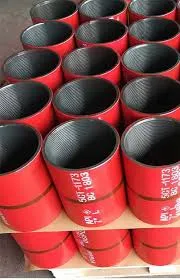Exploring the Range of Tubing Solutions for Various Industries and Applications
Exploring the Diverse World of Tubing Products
In the realm of industrial and consumer applications, tubing products play a pivotal role. They serve a myriad of functions, from transporting fluids and gases to serving as structural components in various devices. This article aims to explore the diverse types of tubing products available, their applications, and the factors to consider when selecting the right tubing for specific needs.
Types of Tubing Products
1. Plastic Tubing Plastic tubing is one of the most commonly used forms of tubing across various industries. Made from materials such as PVC, polyethylene, and nylon, plastic tubing is lightweight, flexible, and resistant to corrosion and chemicals. It is widely used in industries ranging from agriculture to pharmaceuticals for fluid transfer, irrigation systems, and medical applications. Additionally, its ease of manufacturing and cost-effectiveness make it a popular choice for many consumer products.
2. Metal Tubing Metal tubing, including options like stainless steel, copper, and aluminum, offers exceptional strength and durability. It withstands higher pressures and temperatures compared to plastic alternatives, making it ideal for applications in construction, automotive, and aerospace industries. Stainless steel tubing, in particular, is favored for its resistance to rust and corrosion, making it suitable for food and beverage processing as well as medical equipment.
3. Rubber Tubing Rubber tubing is known for its flexibility and resilience, often used in applications requiring elasticity and shock absorption. Commonly made from materials such as natural rubber, neoprene, and silicone, rubber tubing is utilized in areas such as automotive hoses, industrial machinery, and medical devices. Its ability to maintain performance under extreme conditions sets it apart as a reliable choice for many applications.
4. Composite Tubing Composite tubing combines materials to enhance performance characteristics. Often made with a polymer matrix reinforced with fibers such as carbon or glass, composite tubing is renowned for its lightweight and high strength. These tubes are used in specialized applications like aerospace, sports equipment, and high-performance automotive parts. Their unique properties can be tailored to meet specific requirements, making them a versatile choice in advanced engineering.
Applications of Tubing Products
The applications of tubing products are as varied as their materials. In the medical field, hypoallergenic plastic and silicone tubes ensure safe and sterile environments for procedures. In the automotive sector, metal tubing is pivotal in fuel and hydraulic systems, ensuring efficient operation and safety.
In construction, tubing products are essential for plumbing, HVAC systems, and structural supports, contributing significantly to building integrity and functionality. Similarly, in the agricultural sector, plastic tubing facilitates efficient irrigation systems that maximize water use and enhance crop yields.
tubing products

Considerations for Selection
When choosing a tubing product, several factors should be considered
1. Material Properties Understanding the properties of different materials is crucial. Plastic tubing is ideal for chemical resistance, while metal tubing excels in strength and temperature tolerance. Rubber provides flexibility, and composite materials offer advanced performance features.
2. Pressure and Temperature Ratings Each tubing type comes with specific pressure and temperature ratings that dictate its suitability for certain applications. Always ensure that the selected tubing can withstand the conditions it will encounter.
3. Chemical Compatibility When fluids are involved, compatibility between the tubing material and the substance being transported is paramount. For instance, certain plastics may degrade when exposed to specific solvents or high temperatures.
4. Flexibility and Bend Radius Depending on installation requirements, flexibility may be essential. Tubing with a small bend radius is often needed in tight spaces, while rigid tubing may be more suitable for straight runs.
5. Cost and Availability Budget considerations and availability are practical aspects to address. Depending on the specific need, balancing performance characteristics with cost-effectiveness is essential for project success.
Conclusion
In summary, tubing products are integral to many industries, providing solutions that enable efficient operation and safety across various applications. By understanding the types of tubing available, their specific applications, and what factors to consider during selection, individuals and businesses can make informed decisions that meet their unique requirements. As technology evolves, the development of new materials and designs continues to enhance the possibilities within the tubing industry, ensuring it remains a dynamic and critical component of modern engineering and manufacturing.
-
Unlock the Benefits of Pup Joints for Your OperationsNewsOct.31,2024
-
The Quality of Casing Couplings from ChinaNewsOct.31,2024
-
The Essential Role of Pup Joints in Drilling OperationsNewsOct.31,2024
-
The Benefits of Tubing Couplings for Your ProjectsNewsOct.31,2024
-
Enhance Your Drilling Operations with Tubing Pup JointsNewsOct.31,2024
-
Elevate Your Drilling Operations with Tubing CrossoversNewsOct.31,2024







